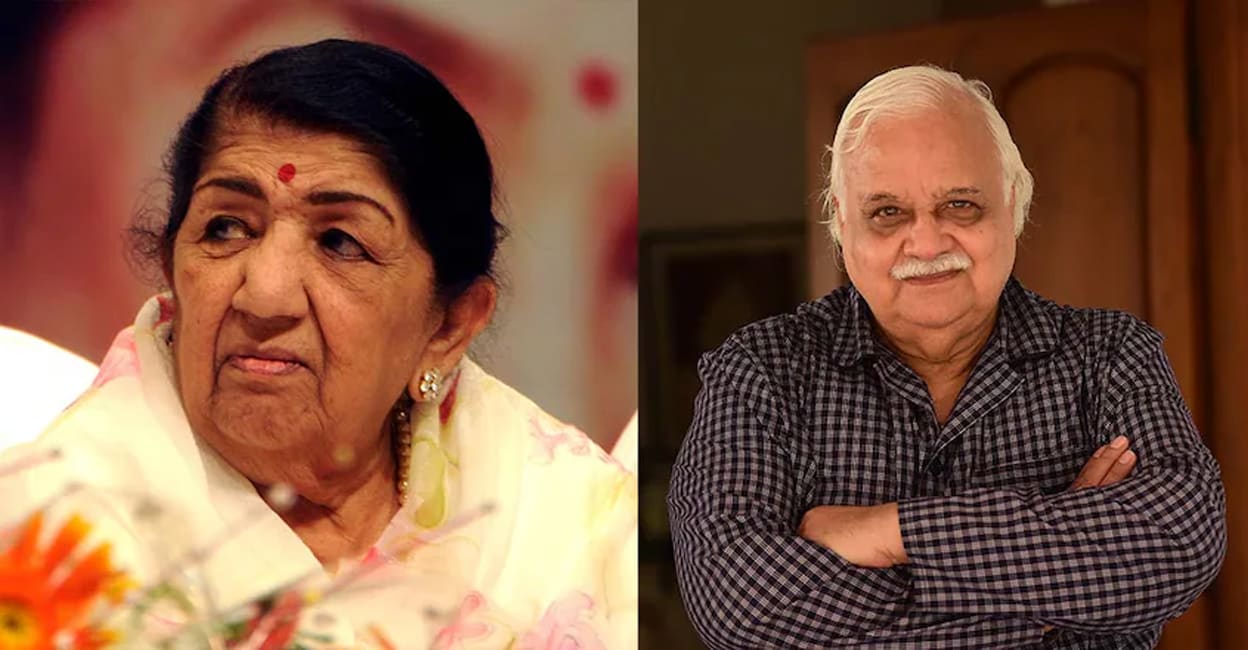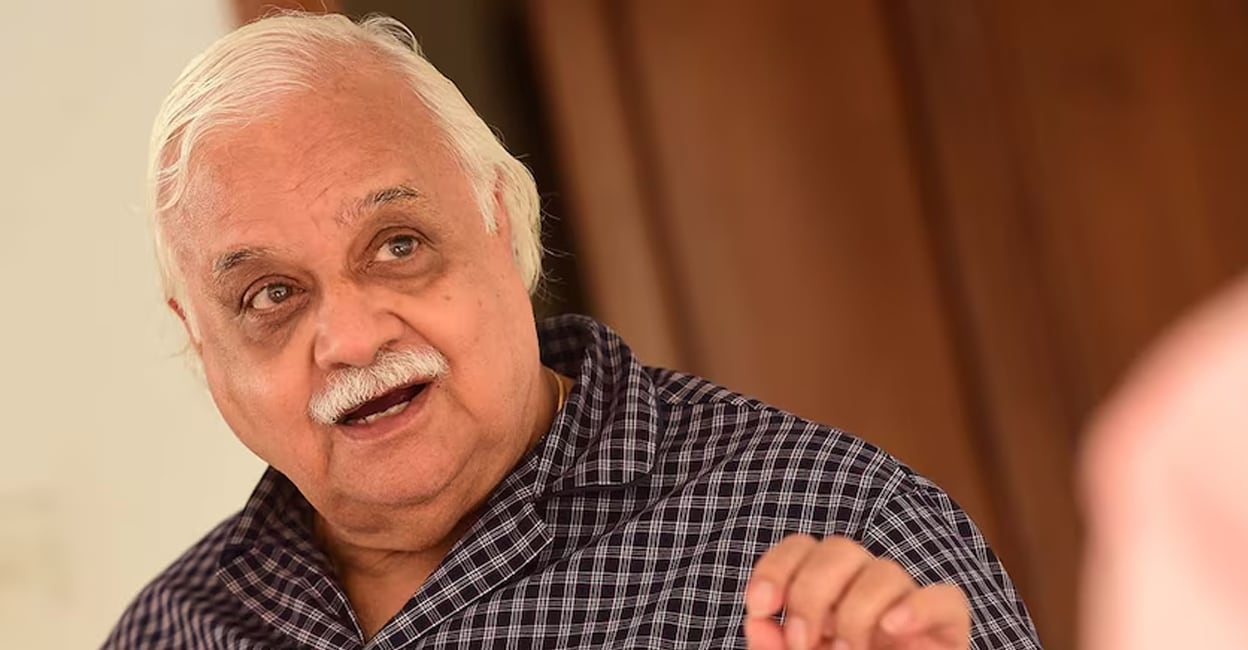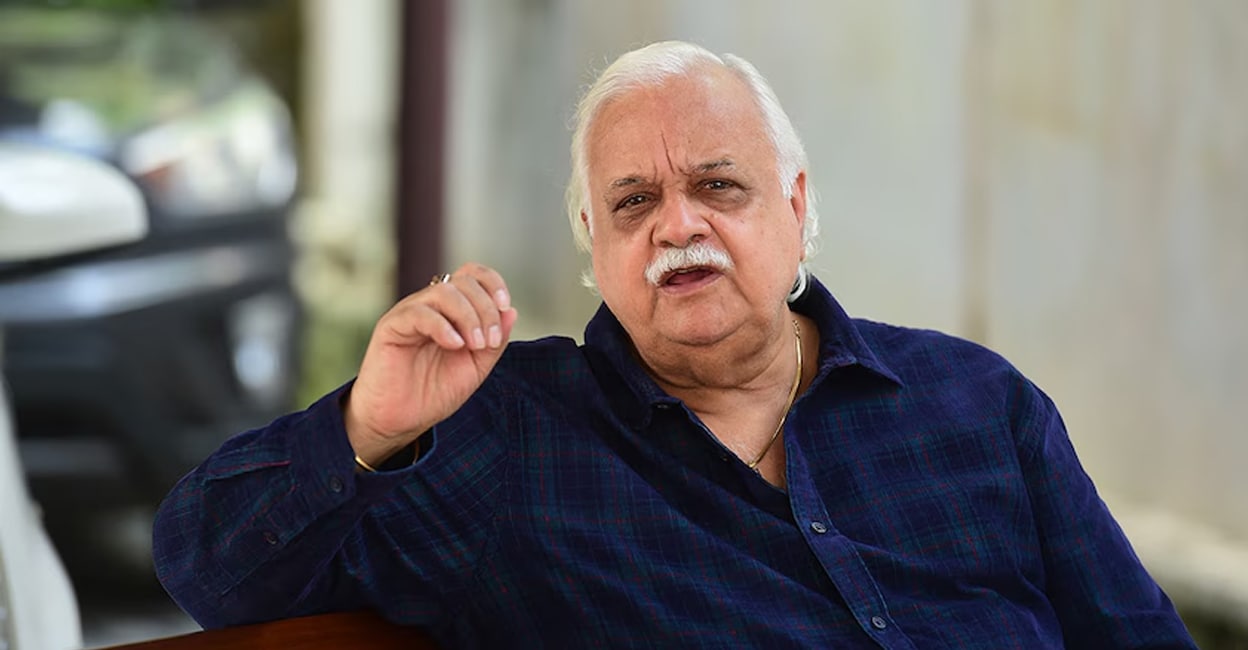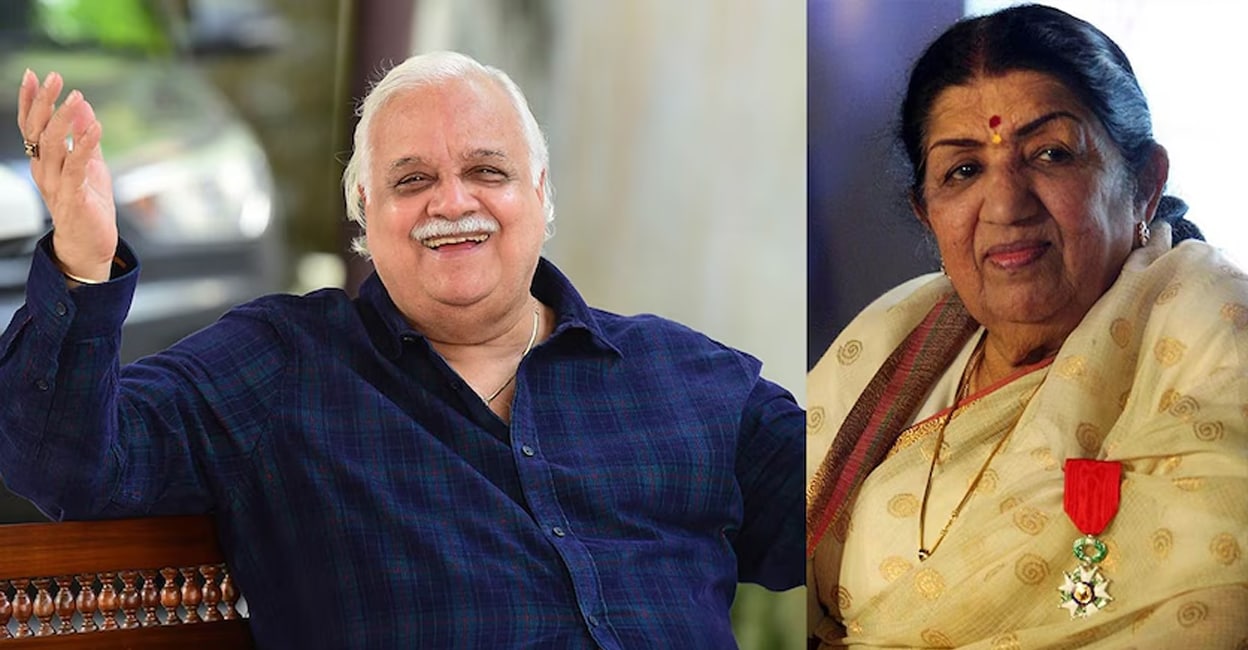You didn’t do justice to your immense talent: Daman Sood's bold advice to Lata Mangeshkar

Mail This Article
'How did I sing?' asked nightingale of India Lata Mangeshkar to her favourite sound engineer Daman Sood. Going down the memory lane Sood recollects that the song in question was for the movie 'Darr' directed by Yash Chopra. When Sood asked Didi, as Lata is fondly called, whether he should be candid or otherwise? Lata replied, speak the truth. “You didn’t do justice to your immense talent while singing the song,” he noted.
“The next day, I got a call from Yash Chopra with a retort: 'What blunder have you committed? The song was perfect, and now Lataji is asking for a re-recording. As you created this problem, you have to find a solution too. The song recording of Jagjit Singh was rescheduled to accommodate Lataji to sing the song again,'” he remembered.
Who is Daman Sood
The name, Daman Sood, had been reverberating in the realms of recording and audio engineering for the past 50 years, and he was Lata Mangeshkar’s most-liked sound engineer. Talking about the versatility of Sood, Lata Mangeshkar once said, “The magic we created when we worked together was beyond words.” Sood was one of the few people in India who had the liberty to criticize Lata Mangeshkar. “My ears are indeed blessed as I had the opportunity to listen to Lataji’s songs first before the whole world grooves to her music,” he noted.

Sood, who was the director of the Western Outdoor Studio in Mumbai for many decades, was so busy that the producers had to book him at least one month in advance to get his date. He was a genius who helmed the recording of more than 1,000 radio-television advertisements and as many film songs. He also played a pivotal role in designing and setting up nearly 110 studios in India. Sood was the technical advisor and senior engineer of highly acclaimed studios such as Yash Raj Studio and S and V Studio. He was one of the main pillars in preparing the syllabi of many institutions including FTII.
Though the name Sood may not ring a bell among Malayalis, the Malayalam songs he had recorded are very popular in Kerala. Sood, who did his master's in recording at Surrey University in the UK, had worked as a sound engineer in the Rajiv Anchal Malayalam movie Daya, which hit the theatres in 1988.
He also recorded the iconic national integration song ‘Mile sur mera tumara’, which was the concept of Lok Seva Sanchar Parishad. The long list of super hit Hindi films that had the stamp of Sood includes 'Dilwale Dulhaniya le Jayenge', 'Dil Toh Pagal Hai', 'Kuch Kuch Hota Hai', 'Mohabbatein', 'Gadar', 'Maachis', 'Gupt' and 'Devdas', among others. The hugely popular ‘Laila O Laila’ song from the Hindi flick 'Qurbani' was the song that catapulted Sood to center stage. Moreover, he had associated with eminent ghazal singers Jagjit Singh and Pankaj Udhas to churn out 75 albums and 15 albums respectively. He was also the sound recordist of popular albums of luminaries of Indian music such as Bhimsen Joshi, Pandit Ravi Shankar, Bismillah Khan, Alla Rakha, M Balamuralikrishna, Zakir Hussain, Shivkumar Sharma and Pandit Hariprasad Chaurasia.

Sood, who is a member of the esteemed Audio Engineering Society (AEC) headquartered in New York, was instrumental in opening its chapter in India. During his glittering career spanning five decades, he has received many awards and recognitions including the Lifetime Achievement Award of Graduates of Film and Television Institute of India in 2022, Rapa Award and IRAA Award, among others.
Sood was recently in Kerala to launch a course in Live Sound offered by Sruti Vidyalaya, which is the music wing of the Orthodox Church. He is also a member of the advisory committee of the course. Sood, who has recorded many songs with noted singers such as K J Yesudas, S P Balasubramaniam and S Janaki and loves south Indian music, opens his heart in a freewheeling chat with ‘Manorama’.
Your camaraderie with Lata Mangeshkar and about the peculiarity of her voice?
That association can only be tagged ‘god blessed’. I have never felt the need to equalize Lataji’s voice and sometimes I had just to do the low cut. Why should one meddle with a voice that had been chiselled to perfection over the past six decades? Whenever Latajji gets a new song, she practises hard with a child-like enthusiasm. She will record the song only after perfecting each note to her satisfaction.

Once, we decided to organize a public music concert at the Brabourne Stadium in Churchgate. But Lataji couldn’t sing to her high standards due to the stiff breeze blowing from the Arabian Sea. After that, I decided not to conduct an open-air programme along with Lataji.
It took almost two years to complete an album with both Lataji and Jagjit Singh as their personal inconveniences stood in the way of its timely completion. I also got the golden opportunity to be involved in the recording of ‘Yara silli, yara silli’ song from the movie Lekin, which was produced by Lataji.
The recording experience with other artists?
The well-received ‘Mile sur mera tumara’ was recorded 36 years ago. When I think about that national integration song, my interactions with legendary Hindustani vocalist Bhimsen Joshi are flashing through my mind. We wanted a song bit that was just 10 seconds long. Bhimsen Joshi who was used to singing in a detailed manner, found it quite tough to abridge his part of the song to 10 seconds. Later, I told him to sing the way he wanted it to be with the assurance that I would edit the song accordingly. That made him happy and he sang the song with great assurance.
In another instance, Bhimsen Joshi found it hard to sing along with the beats for an Amol Palekar movie. During those times, the singers rendered the song with the backing of a live orchestra. Shyam Rao was the orchestra conductor. I told Bhimsen Joshi to sing at will without looking at the orchestra conductor.
Bismillah Khan
I did an album named ‘Music Today’ in association with the Badshah of Shehnai, Bismillah Khan. He informed me that he would reach the studio at 11 am from Benaras. I waited till 1 pm but he didn’t turn up. When I stepped out of the studio to have lunch, here comes the wizard of Shehnai. Straightaway, he sat down on the floor of the control room and started to smoke hookah and told me to record music there. I arranged all the musical instruments around him to start recording. With much cajoling, he agreed to record the song in the studio booth. That was a great experience working with Bismillah Khan.
Mehdi Hasan
At that time, Mehdi Hasan had some kind of a disease like goitre in his throat. We recorded songs for an album called ‘Shabat’. He expressed his desire to listen to the songs the next day and said that he wanted to hear his raw voice sans any echo or special effects. The request was a great surprise for me. The great singers thoroughly analyze the quality of their voice threadbare and that’s why they are head and shoulders above the rest.
Anup Jalota
I once asked Anup Jalota whether he was reading the song. He said that I observed him correctly, and added that there wasn’t enough time to practice. I had a good rapport with Purushotham Jalota, father of Anup. Purushotham was pretty aware of his son’s lack of practice and told me to advise Anup to rehearse more for perfection.
The toughest recording ever?
As a matter of fact, I am very passionate about recording and doing the work with utmost happiness. I make it a point to learn new things every day. I used to fix the microphone for the singers and that’s when there is a connection with the singers. They will also sing their heart out. Whoever had worked with me wanted to continue associating with me in the future too.
I remember recording the song ‘Dolare dolare’ for the movie 'Devdas' in 2002. Mumbai was flooded due to heavy rains and people were cooped up in their homes or relief camps. I was also confined to my home. But ignoring the dangers posed by the deluge, Sanjay Leela Bhansali, the director of Devdas, came to my home in a car. We should record the song on a war footing and if we miss today’s chance it will be difficult to get the dates of some artists and singers. The release of the film will also be delayed, Sanjay had said. He came to my home with a request that we should leave for the studio immediately. When we reached the studio, I had to put everything in order, without the help of anyone, to record the song. The song bagged the IIFA award in Johannesburg in 2003. That day I realized how committed Sanjay was to his work and that’s the reason why they are scaling new heights.

The best artist in your opinion?
Jagjit Singh. He was a complete artist. He gave ample importance to the lyrics of the ghazals and the meaning of the words used. He won’t sing if the lyrics are not up to the mark even if the lines were penned by his friend. Mohammed Rafi was down to earth and S P Balasubramaniam was good at heart.
How did you pocket the recording of Qurbani songs?
The well-liked ‘Aap jaisa koi mere’ song was recorded by Feroz Khan, who was the producer, director and actor of the film, at the Abbey Road Studio in the UK. The song introduced Pakistani singer Nazia Hassan to Indian moviegoers and music lovers. The song was recorded in a stereo system as India had only a mono system at that time. But I recorded the film’s other songs with the help of eight tracks using four stereo recorders. I proved that film songs can recorded in a modest studio like Western Audio. The peppy ‘Laila O Laila’ song was recorded following that process.
Can you recollect the days after graduating from the Film and Television Institute of India in Pune with a gold medal in sound engineering?
It was tough to get a job then. But luckily I bagged a job at Bombay Lab (Bombay Sound Service) in Dadar. I got the opportunity to do all the work relating to background music and sound mixing at the studio. At that time, we had optical recording system and Bombay had only four studios – Mehboob Studio, Film Center, Bombay Sound and Famous Studio. I worked at Bombay Sound Service till 1973 and decided to move on. Later, I worked for Western Outdoor Studio, which was into jingles for radio. I got the chance to associate with the making of jingles in Hindi, Marathi, Gujarati, Tamil, Kannada and Malayalam. I proved beyond doubt that I can do music albums, serials, and songs of feature films.
The Qurbani movie made me a person to reckon with in the field of sound engineering. I was particular to keep tabs on the technical transformation that was happening in sound engineering. I continued at Western Outdoor Studio, which was eventually absorbed by the UTV Group, till 2002. It was a period dotted by scores of trials and tribulations.
The role of sound engineers in motion pictures and other projects?
The sound engineers have a significant role to play in bringing out the best in an artist. The sound engineers and sound mixing are pivotal cogs that make a song or a film stand out. Sound engineering is also a work of art. A human being’s throat is the best musical instrument and the magic weaved out of it is simply astounding, to say the least. The ears should be attuned to good music by listening to some extraordinary tune time and again.
Sound is the greatest medium and everything. In the Bible, ‘God said’ is referred to 10 times to describe the creation of the cosmos. Sound is undoubtedly the creation of God. Babies come into this world by crying, their first sound. Sound keeps us engrossed and is the mainstay of communication. Imagine watching Hollywood Avatar without sound, you will get bored in no time.
Sound engineers are inevitable as sound is invaluable in every sphere. But the Bollywood songs have now become ornamental and the singer’s voice is getting buried. The present songs are all about rhythm and orchestra. But more experiments are being tried out in south India. I am also happy that intellectually challenging movies are coming out of the stables of the South Indian film industry.

